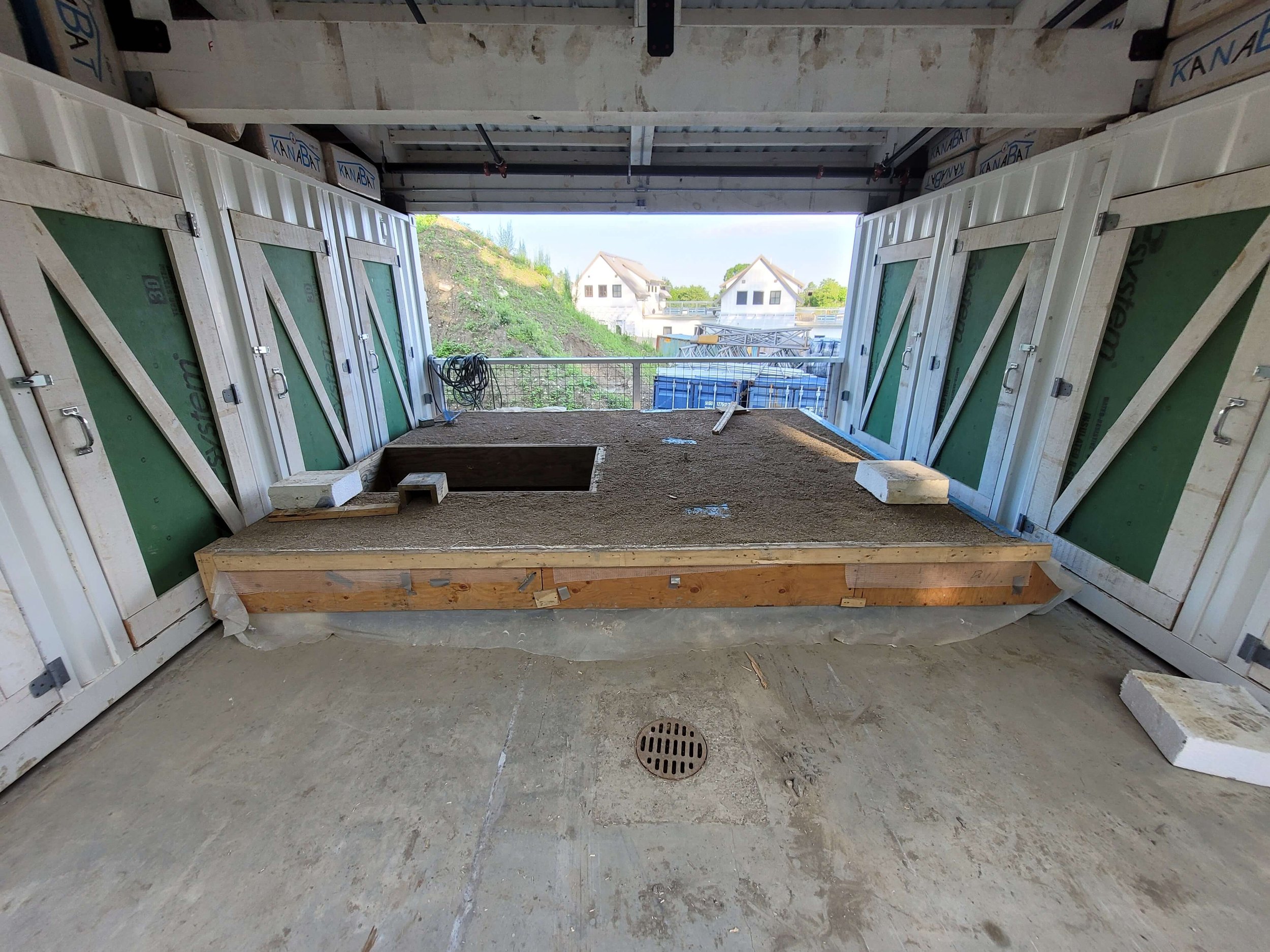Big Ideas, and Food, Growing at Hillside
/By Sadie Woodward
Many big ideas exist behind the practice of growing food locally. The global agriculture industry is one of the main consumers of fossil fuels in the world. Food that is sold in grocery stores has undergone various processes, many of which are energy-intensive. The industry uses pounds and pounds of packaging. It requires trucking, flying, or shipping food hundreds of miles. It requires mass producing food in harmful ways, such as through monocropping and factory farming.
We can do many things to avoid supporting this industry. Buying local food is important in combatting the use of fossil fuels. But what does this have to do with Hillside?
This blooming Newburyport community, still under construction, has the goal of making environmental sustainability a way of life. The leaders at the Hillside community envision taking the practice of buying locally a step further. Big plans are in store to get fresh, ultra-local food to the people of the Hillside community.
Various plantings are already underway on Cottage Court. Espalier apples, pears, edible flowers and herbs, even kiwis are growing in lush garden beds and trellises. Some may have enjoyed the apple-pear cider last fall. Behind Cottage Court, machinery and carpenters are working hard: on the future buildings of Hillside, and on turning the rest of the land into viable farmland.
What will be grown at Hillside?
Heirloom species will be the focus. “If I can grow it in this zone, I’ll be growing it,” says Jeremy Tackett, the Director of Sustainable Farming at Hillside. Potatoes, squash, pumpkins, herbs, and berries will be planted, and preserved after the harvest. Fruit trees will produce apples and pears.
Many other native species are being grown: milkweed, sunflowers, calendula, wheat, burdock, bee balm, artichoke, lettuce, and amaranth, to name a few.
Native species grow alongside Route 1. These can be used for weaving, natural pesticides, chicken feed, and enriching the soil, among many other uses.
The construction of farmland is still in progress, but most plantings will be found in the area in between Hillside Ave and Cottage Court called the “grange.”
Jeremy calls this farmable land an “edible landscape.” This term alludes to his goal that every inch of greenspace that is not in close proximity to a road will be used for edible and useable plants for Hillside residents.
What else can you do with plants?
Some might assume that the future plantings at Hillside would simply serve as food, but sustenance is just one purpose these plants will serve. Jeremy holds knowledge of seemingly endless ways that simple seeds, blossoms, roots, and leaves can be combined and used for salves, balms, supplements, and more.
Aside from the purposes they serve as food or to fulfill other human needs, some plants serve the purpose of enriching their environment or helping other plants grow. Jeremy collects ingredients to build an ecosystem the way a chef does in a kitchen. “If we put a radish into degenerated dead dirt, and we let it drop seeds, now we have dozens of radishes, and we can just let them rot. Where they rot, now all of a sudden we have organic matter and carbon sequestration.”
If other things are added, such as flowering plants and mycelium, a gardener can attract pollinators, sequester nitrogen, and utilize decomposers. “Through proper planning and allying with a variety of beings in nature, we can transform a community. We can cultivate a holistic habitat that aims to meet the needs of all beings within the community.”
Jeremy Tackett in front of the grange. Still in progress, this will be the main planting area.
Invaluable benefits to residents
Reducing our usage of fossil fuels, single-use plastic, water, and energy resources are all necessary to be a sustainable community. However, Jeremy emphasizes that the things added to the community from the edible landscape are just as important. He is passionate about presenting communities with the opportunity to connect with their food. “In my opinion, where you can do the most good is to truly connect, whether it’s connecting with someone who’s growing your food, or to be a part of it yourself.”
From his own experience, he recognizes the value in connecting with your food source. “How do you quantify the spiritual and mental healing of understanding what goes in to growing a certain number of tomatoes or beans? Of what went into watering those plants every day, or weeding and tending to them?”
Residents have been given starter plants to grow on their own. Some units have patios, where residents can practice growing their own food. Jeremy serves as a guide to the community, a wealth of knowledge about practical uses of plants and growing methods.
Think globally, act locally
A phrase from the environmental movement, “think globally, act locally,” applies here. We know about the big picture: the global agriculture industry, as it operates now, is harmful to the environment. But what can we do? We must act on a community scale: Reduce our negative impacts, while at the same time, enriching our own lives and the lives of those around us.
“It’s a rewarding process, and it’s a privilege what I get to do,” Jeremy says. “I get to weave and understand the potential for all these different things. Then I have to acknowledge my own ignorance. What do I not even know about? What else can these things do? It’s almost paralyzing, but it’s so exciting.”



